Searching for Snow Leopards on the Roof of the World
An uplifting tale from the mountains of Tajikistan
Hello everyone,
I’m writing this from my shed in the green (and currently rather chilly) bosom of Wales’ Black Mountains. I hope you’re having a happy day, wherever you are.
This month I’m bringing you a tale from the mountains of Tajikistan, a country I hold very dear. I do hope you enjoy it!
Love and leopards,
Ants xx
It felt like we’d driven off the end of the earth, our existence made inconsequential by the vastness of the mountains. Around us rose the ramparts of the Southern Alichur range, the late afternoon sun caught on their needle-like peaks. At 4300 metres altitude and – 30 c, the air felt like cut diamonds. ‘Fresh snow leopard tracks!’ exclaimed Mahan, my guide, kneeling at his spotting scope. A few hundred metres ahead of us a single set of tracks wound up a snowy slope. But night was falling, and it was too cold to stay here any longer. We had to turn back.
It was my third week looking for snow leopards in Tajikistan, but so far the ghost cat had remained elusive. My search began at M-Sayod, a community wildlife concession abutting the border with Afghanistan. For three days I scanned the reserve’s louring walls of rock: waiting, watching, hoping, the mountains awash with possibility. ‘We’re looking for movement – specifically tail movement’ said Mirzo Mirzoev, a conservationist from the Tajikistan Nature Foundation, as we crouched in the cold, eyes glued to scopes. The more I looked, the more I imagined every crag, every boulder, to be a leopard, hope playing tricks with my brain. Lammergeiers drew circles in the sky. The mountains rang with the calls of chukar partridges. Groups of Bukharan markhor, the world’s biggest goat, skipped nimbly over the rocks, the males - with their trailing beards and metre high corkscrew horns - straight out of Star Wars’ Mos Eisley Cantina. But the shy, perfectly camouflaged cats were nowhere to be seen.
On my second day at M-Sayod, a ranger and I climbed into the mountains to collect a recently-set camera trap, gasping with delight when we watched the footage and saw two snow leopards walking through the frame, 10 seconds apart. But that was the closest we got.
With my husband Marley and a series of local guides and conservationists, I spent the next few weeks travelling deeper into the Pamir mountains, searching for snow leopards and their stories. Near Ishkashim, a town straddling the border with Afghanistan, we drove along a narrow road pincered between snowy overhangs and the ice-bound waters of the Pyanj, knowing that an avalanche had recently swept a digger and its driver to their ends here. In the Wakhan valley we scrambled across the sliding shoulder of a mountain in the wake of an earthquake, four male ibex watching us from a ridge. I saw lynx and wolf tracks and heard numerous stories about leopards. But still we couldn’t find one.
It was mid-February by the time I arrived in Alichur, an ethnic Kyrgyz village whose low, mud brick houses squat on a high plateau bordering China and Kyrgyzstan. Known as the Bam-i-Dunya, or ‘roof of the world,’ it’s hard to imagine a harsher place that humans call home - when Marco Polo passed this way he described it as ‘so lofty and cold you don’t even see any birds flying’. It was - 40 c on the day we arrived, the air like a blade in my throat. The few villagers we saw hurried along the snow-packed streets swaddled in sheepskin coats, fur hats and heavy leather boots.
My guide here was Mahan Atabaev, an ex-hunter who’d set up a 92,000 hectare community conservancy. Every morning we left Alichur in Mahan’s beaten up silver Land Cruiser and crunched up wide, snowbound valleys in search of leopards, ibex and Marco Polo, the world’s biggest sheep. It was a bewitching, lunar landscape, the scale and absence of colour giving rise to an odd sensation of flying. The only humans we saw out here were shepherds; lone figures in balaclavas and sunglasses, watching over their herds of shaggy black yaks.


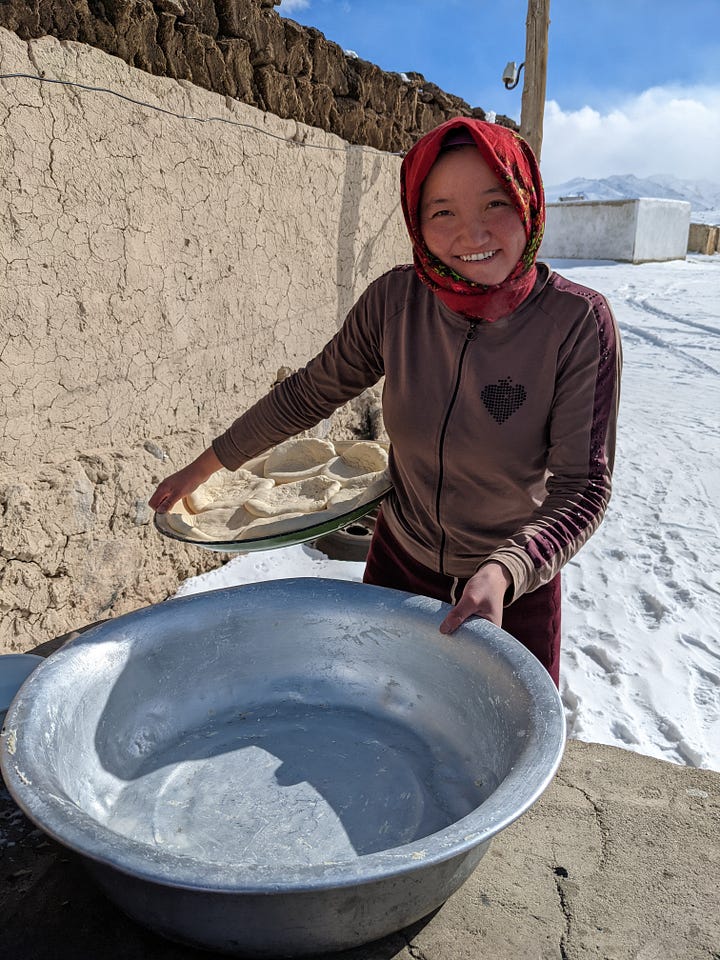
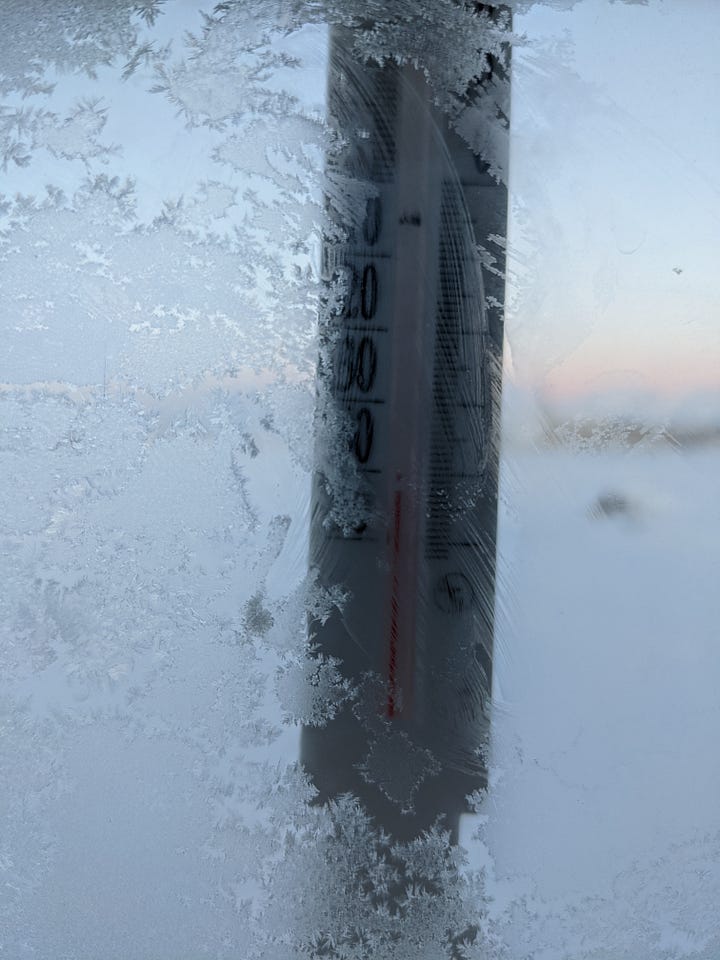
Mahan, a slight 43-year-old with a voice like the wind, often stopped the car to point out distant herds of Marco Polo, his eyesight and acuity putting me to shame. He told me how the sheeps’ numbers had increased five-fold since he’d set up the conservancy in 2012, and that with more prey, snow leopards had prospered too. In 2011 no cats were recorded here. In 2017, camera traps caught nine individuals.
One morning, as we drove up a valley about 10 miles north of Alichur, the Land Cruiser’s engine cut out. It was - 30 c, the snow thigh deep. For two hours Mahan hammered and cursed, delving under the bonnet with his bare hands, scattering tools and engine parts on a mat in the snow. In the end he had to resort to using my satellite phone (thank goodness Marley and I had packed one) to call a friend and ask them to come and tow us out. The relief when, an hour later, his friend Manap’s Land Cruiser appeared in the distance, the roar of its V8 engine shattering the valley’s silence. It would have been a long, and dangerous, walk back. For the rest of our time on the plateau, we travelled with two cars - just in case. I shuddered to think of Mahan patrolling these valleys alone, counting herds and looking for poachers, without a satellite phone or any sort of safety net.
On my last day with Mahan we headed south of Alichur, passing through the even smaller settlement of Bash Gumbez. A young woman was baking bread in an outdoor tandoor oven, slapping the roundels of dough against the inside walls using a battered leather glove. While I was dressed in acres of down and Gore-Tex, the woman was wearing a thin brown tracksuit top. Mahan told me the temperature had dropped to - 63 c here the previous winter, with the village losing 700 yaks and 1000 sheep to the cold. Climate change was doing strange things to the weather here, Mahan went on, with hotter, drier summers and longer, colder winters. Every year it was becoming harder for people to keep their animals alive. And every year it was becoming harder for the wild herds to survive.
We wound south from Bash Gumbez, following a ribbon of vehicle tracks up a wide valley framed by the fangs of the Southern Alichur range. Islands of cloud floated in a lapis sky, their shadows like thrown anchors on a sea of snow. The sense of space, of scale, was incredible, our two cars like a pair of ants crawling across the moon. The valley, Mahan explained, had once been a vein of the ancient Silk Road, and was part of a system which threaded through the mountains to both China and Afghanistan. ‘This is Flying Horse valley,’ grinned Mahan from the seat beside me, ‘the home of the snow leopard.’ I looked out of the window, mouth agape, my whole being alight with wonder.
Even here, in this cold, remote valley, humans had built houses and lives. Around 10 long miles from Bash Gumbez, a single shepherd’s hut stood huddled at the foot of a mountain. As we drove past it, a man waved us down and invited us in for tea, his face covered by goggles and a mask fashioned from a pair of pink, diamante-studded ladies pants. Out here, fashion was secondary to surviving the sun’s glare.
The shepherd, Babak, was a friend of Mahan’s, a shy, green-eyed man with weather-scalded skin. His wife, Elsanam, was a smiling woman of about 30. The whitewashed walls of their neat single-roomed house were hung with traditional Kyrgyz embroidery, and a stack of brightly coloured mattresses were piled against one wall. Beams of golden afternoon light lanced through the single window, illuminating the room’s most important feature, a metal, yak-dung fired stove.
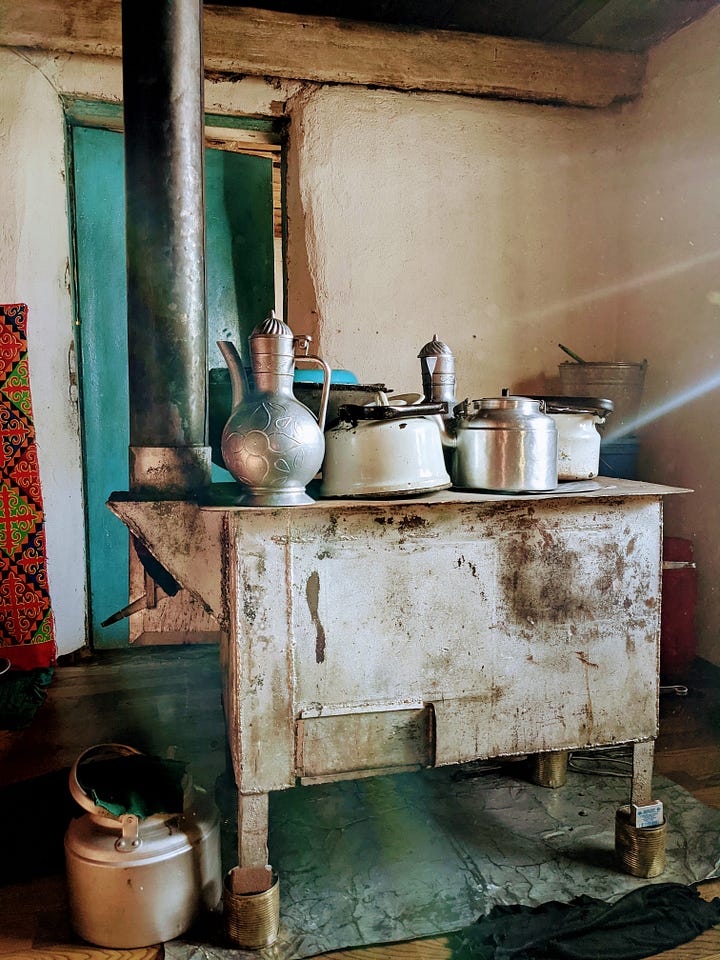
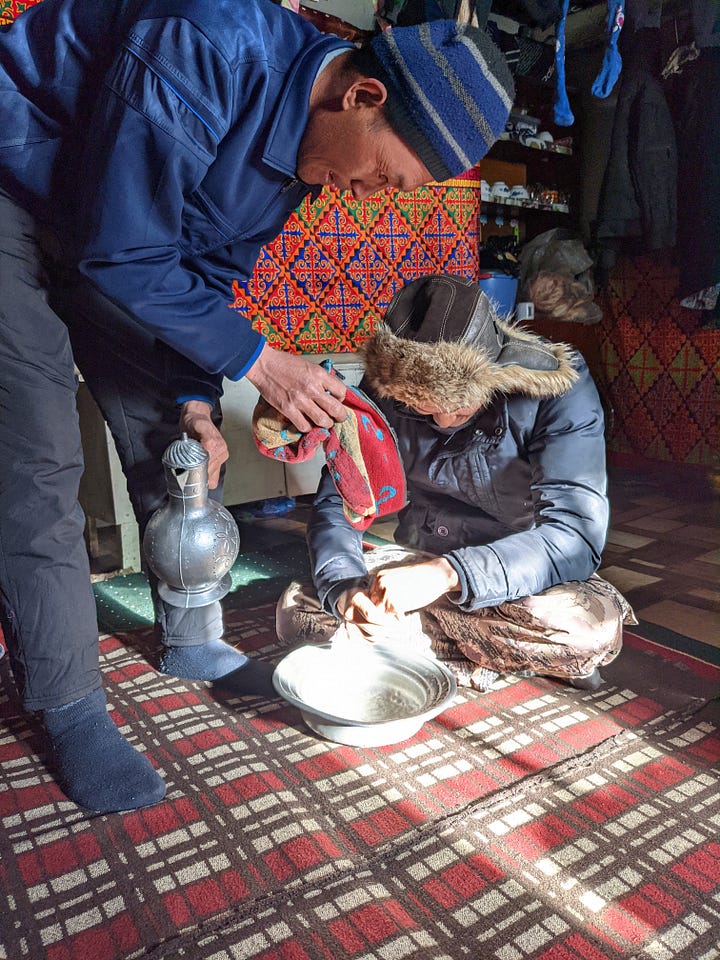
As Babak washed our hands with water from a silver jug, Elsanam bustled about preparing tea. Well, not quite tea - more a feast. Soon she’d spread a golden tablecloth on the floor, piling it - as if by magic - with plates of sweets, roundels of fresh white non, pots of green tea, bowls of freshly churned yak butter and plates of boiled yak meat. There was something so touching, so humbling, about the way Babak came round to each of us, washing our hands as a sign of respect. This is what travel is all about, I thought - breaking bread with people from different cultures, building bridges of understanding and connection between our very different worlds. If more people experienced this sort of kindness, there’d be a great deal less racism and othering in the world. When I look back on those weeks I spent in Tajikistan, it’s moments like this I cherish above all else.
It was later that afternoon that we saw the snow leopard tracks. We parked the cars a few miles beyond Babak and Elsanam’s house and walked half a mile to the foot of a mountain, the air so thin that even walking this short distance felt like wading through sand with 20 kg weights attached to each ankle. My breath balled in the freezing air, the moisture from my nose solidifying into an icy moustache. Above us, a Golden eagle soared along a ridgeline, impervious to the cold.
Minutes later, Mahan spotted the tracks. But the sun was setting and we were several hours’ drive from the safety of Alichur. It wasn’t long before we had to turn back. As I walked back to the car, I recalled the words of Peter Matthiessen in The Snow Leopard: ‘I am disappointed, and also, I am not disappointed. That the snow leopard is, that it is here, that its frosty eyes watch us from the mountain - that is enough.’ Like Matthiessen, I was disappointed, but I think a part of me never believed I’d see a snow leopard anyway, that simply to look for one, to ‘scrutinize the shadows’, as Sylvain Tesson had done in Tibet, was enough.
Two days later, having left Mahan to start the long journey back to the capital, Dushanbe, our driver, Gulnazar, turned his Land Cruiser up a steep, snow-armoured valley in the central Pamirs. Marley had been told about a recent leopard sighting in this valley and we’d decided that maybe, just maybe, it was worth one last look.
Gulnazar inched the Land Cruiser along the edge of the narrow, high-walled valley, a river clattering below. It was prime avalanche conditions - plus it was early afternoon, when leopards are normally asleep. Deciding it was too dangerous to go on, we climbed out of the car to look for a safe place to turn around. ‘Snow leopard!’ Gulnazar suddenly exclaimed, pointing to the slope above us. For several, frantic minutes I couldn’t see it. Then there it was, padding down a scree field a few hundred metres away. Big paws. That long, swinging tail. Effortless grace. My hands shook, my heart thundered. After three weeks of searching, it was like seeing a spirit materialize. For twenty minutes we watched the leopard wander across the scree field and up onto the snowy flanks of the mountain, occasionally pausing to look back at us. Then, like a ghost, it was gone.
IN OTHER NEWS…..
If you’d like to listen to the BBC radio documentary I made about this 2022 trip to Tajikistan, click here.
On Saturday 7th September I’m running a one-day Writing in Nature workshop with folklorist Pridie Tiernan at her beautiful farm in the heart of the Black Mountains. This is going to be a really lovely day, and I’m so looking forward to it! More details and tickets here.
I’ve put together a list of my favourite books about nature and the environment.
Please do let leave comments - it’s always lovely to hear your thoughts. And thank you, as ever, for being here. Until next month, Ants x




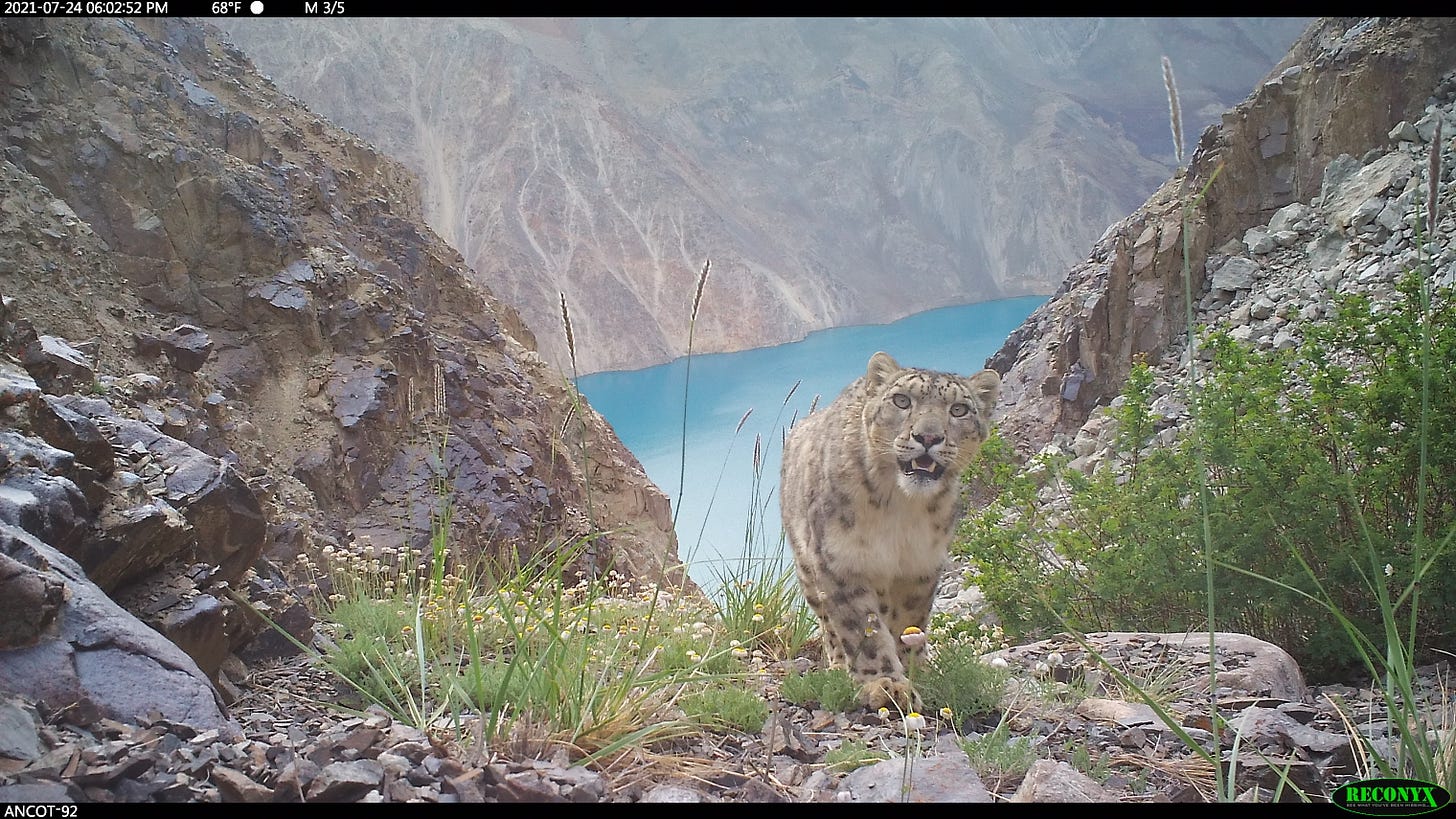

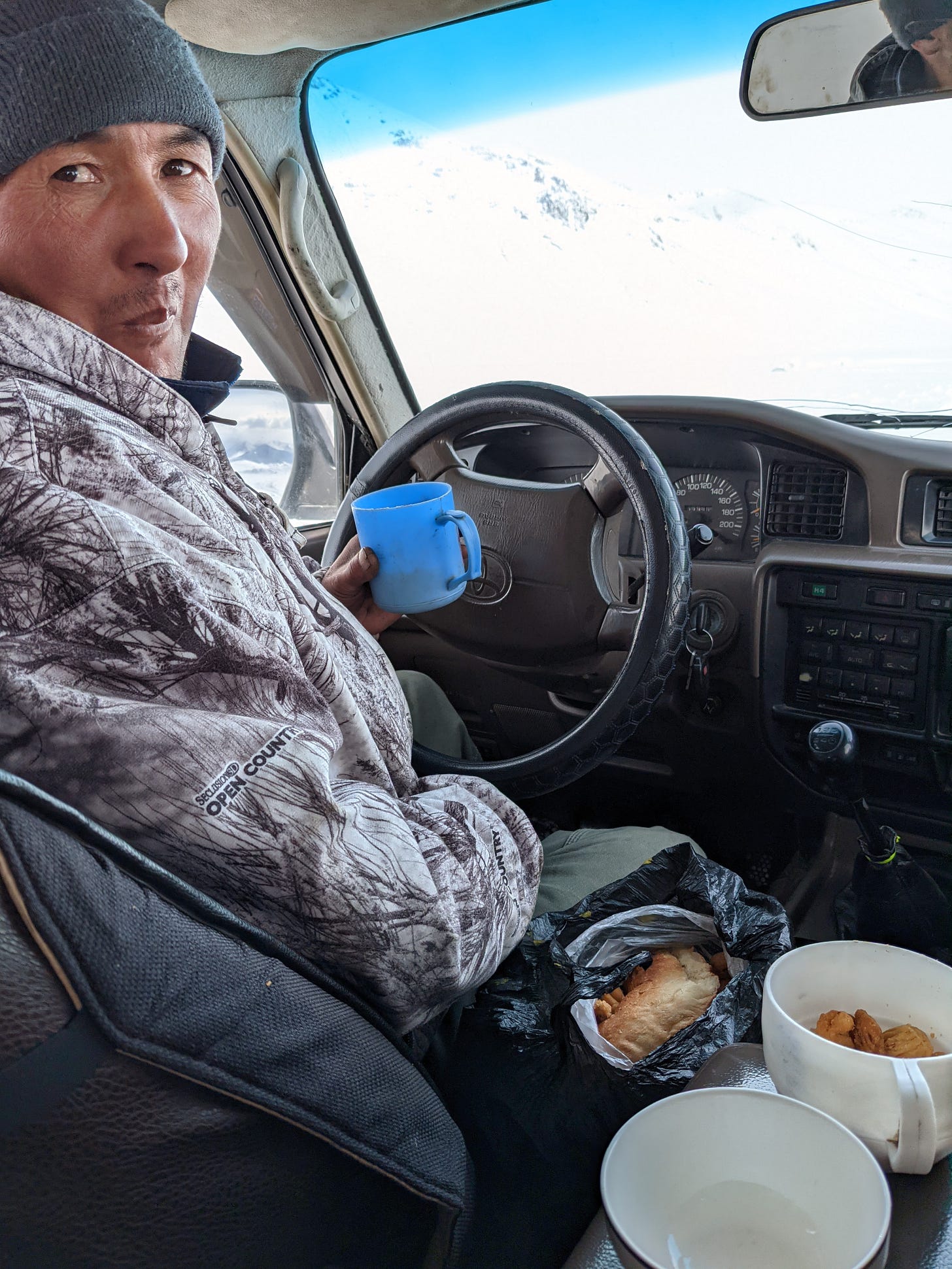
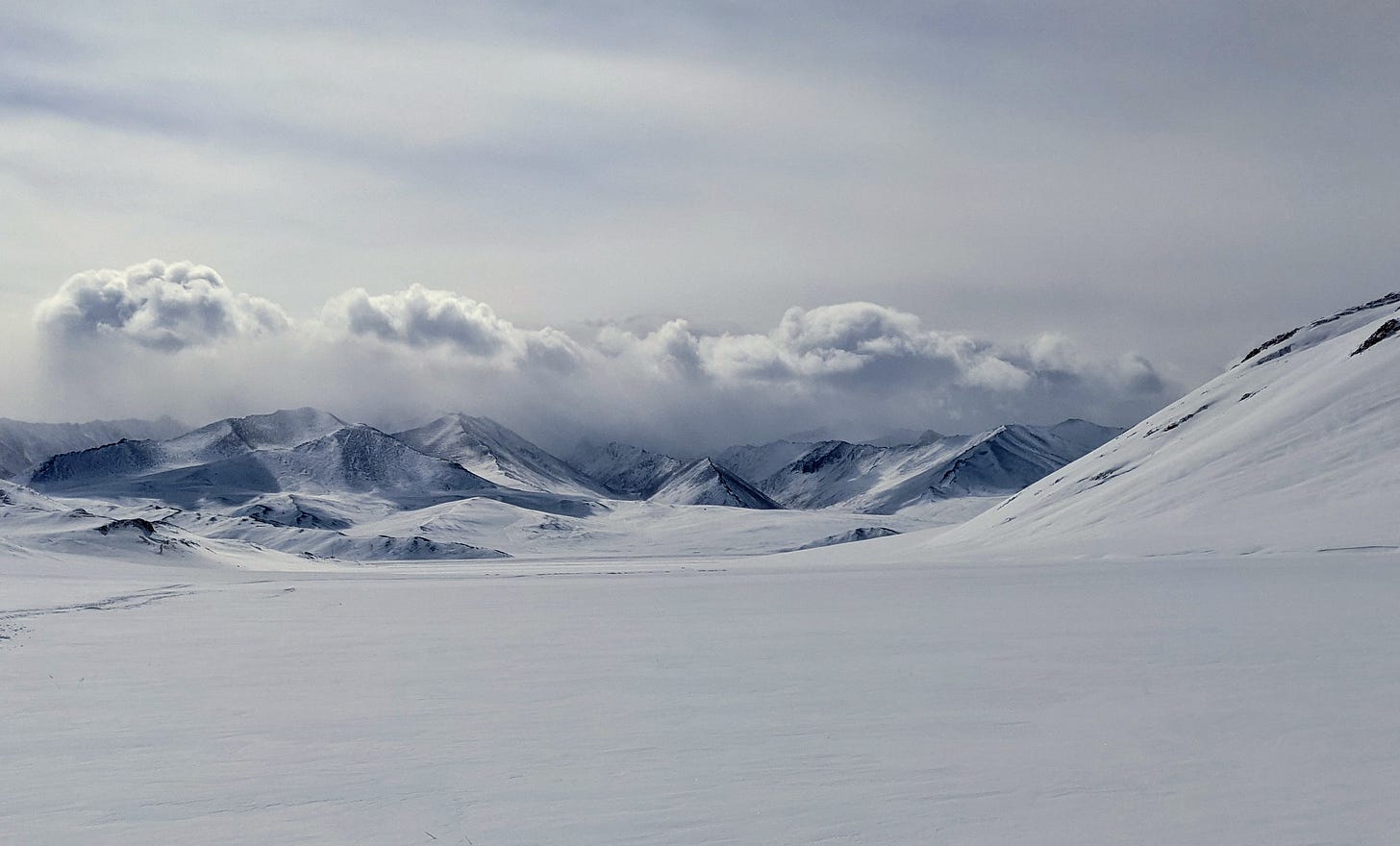
Thrilling and humbling. Ants, you write beautifully!
Really enjoyed this article , Antonia . Very evocative for those of us that like the empty spaces on this earth